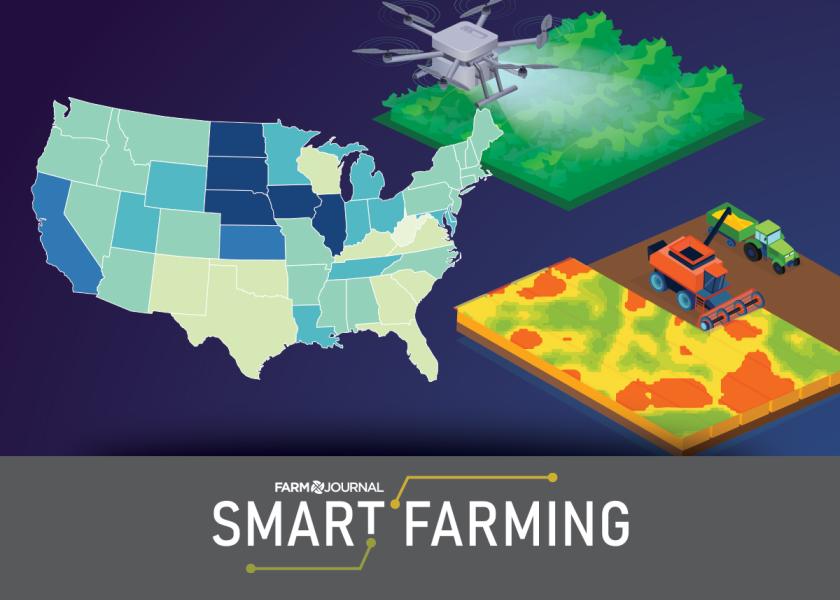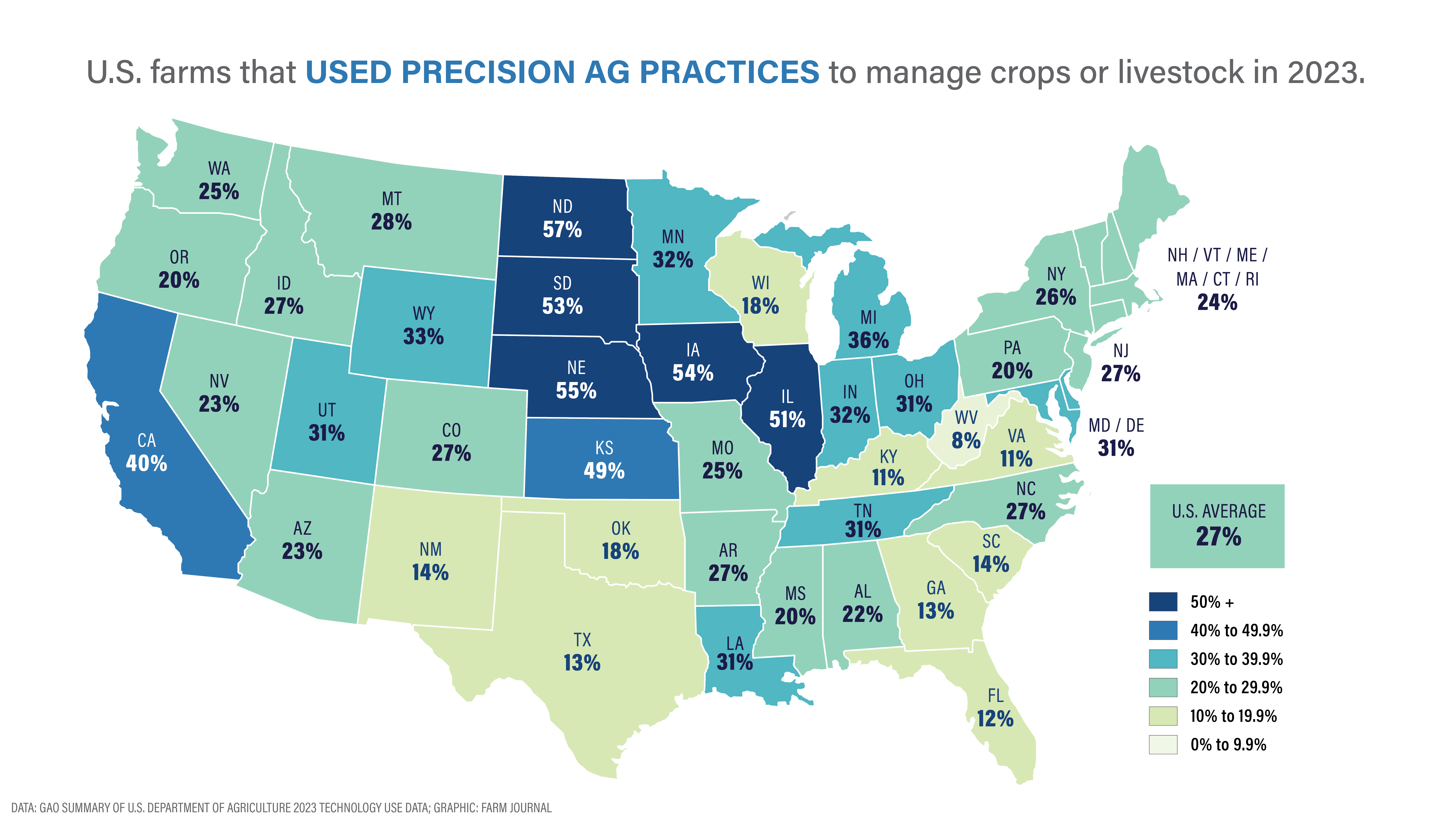Which State Tops The List For Precision Ag Use?

In late January, the U.S. Government Accountability Office (GAO) released a study on the benefits and challenges for technology and its adoption. While using precision agriculture technologies can be beneficial for efficiency, profitability and the environment, high up-front costs can be a barrier for some farmers.
GAO's role is to help improve the performance and accountability of the federal government. While collecting information for the technology assessment, which was conducted from April 2022 to January 2024, GAO examined policy options to help address the challenges.
Tech Adoption By State
While precision agriculture technologies have been available since the 1990s, only 27% of U.S. farms or ranches used precision agriculture practices to manage crops or livestock, based on 2023 USDA reporting. The following top five states for tech use account for approximately half of the 2022 U.S. cash receipts for corn (52.6%) and soybeans (45.7%):
1.) North Dakota
2.) Nebraska
3.) Iowa
4.) South Dakota
5.) Illinois
Most northeastern states have adoption rates below the U.S. average of 27%. Lower adoption in the Northeast might also be explained by smaller farm sizes and multiple crops in the region. GAO says farm sizes smaller than the national average could have less benefit from precision agriculture technologies.
Similar to the Northeast, many southern states have adoption rates below the U.S. average. Lower adoption in the South might be due to the concentration of small, minority and under-resourced farmers lacking access to basic tools, such as computers, and continued use of outdated technologies and practices, according to academics from a southern state.

Policy Goals and Options
GAO examined three policy goals and options to help address adoption challenges or enhance the benefits of precision agriculture technologies:
1.) Encourage greater adoption and use, such as provide additional incentives or other financial support; better understand and quantify benefits and costs; and expand outreach to farmers.
2.) Encourage further innovation through research and development to improve on-farm data gathering and analysis as well as the development and use of standards.
3.) Manage greater amounts of data, which involves enhancing data analysis and encouraging data sharing.
These policy options identify possible actions by policymakers, which include Congress, federal agencies, state and local governments, academic and research institutions, and industry.
For more highlights from the study, watch this Smart Farming segment from AgDay:







